
Butterflies are surely among the most beautiful insects in the world! They are usually harmless, so pretty and colorful, and so fragile. But, these stunning creatures are more than just a beautiful sight.
They can be very clever too, and have a lot of interesting features. Do you know what butterflies eat? How long do they live? And why are they so colorful and diverse? Let’s find out!
#1 There Are Around 20,000 Species of Butterflies
Butterflies are incredibly diverse! There are around 20,000 species of butterflies in the world.
They live on every continent, except Antarctica, and what’s most exciting, you are likely to find very different species in different climates and locales.
The most fascinating thing about butterflies is how many shapes, colors, and sizes they come in.
The smallest known butterfly is the Western Pygmy Blue Butterfly whose wingspan is half an inch and the largest one is Queen Alexandra’s birdwing butterfly with a wingspan of up to 12 inches (but you are unlikely to see one of those in the wild unless you go to Papua New Guinea).
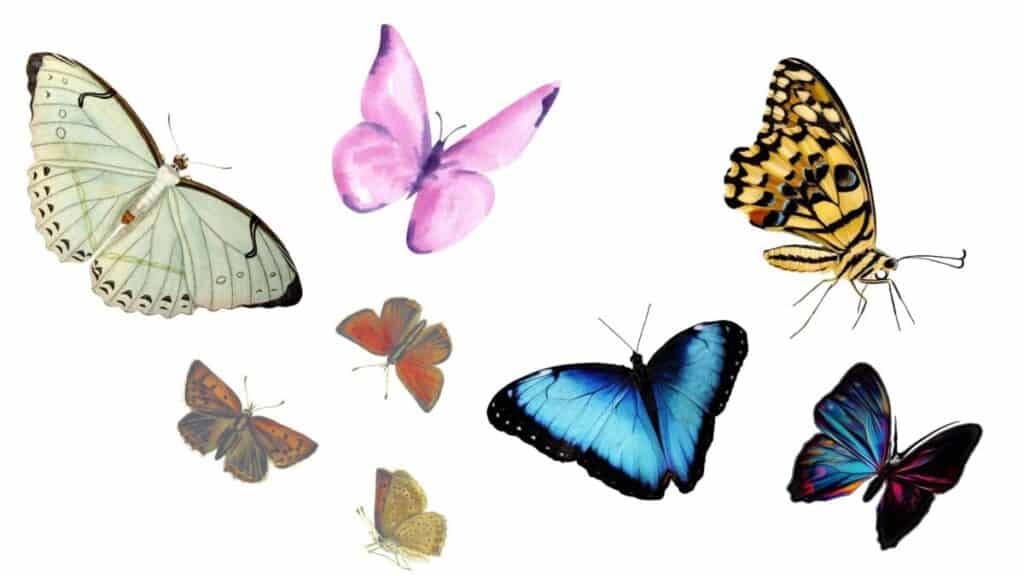
You also must have noticed that butterflies are incredibly colorful. For every color found in nature, there is probably a butterfly to match.
Their wings can be white, brown, gray, yellow, red, blue… and any combination of colors.
#2 Butterfly Wings Are Not Just for Show!
Butterflies often have amazing designs on their wings – from complex colors to intricate patterns, they are quite a sight to behold.
However, beauty is not the only purpose of these wings. They evolved to help butterflies survive.
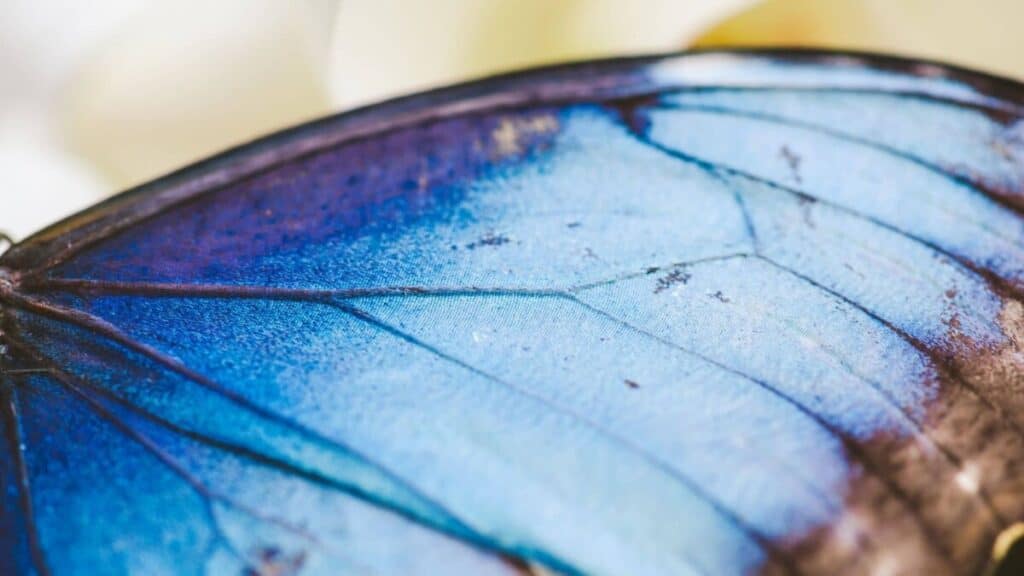
Some butterflies have wings that help them blend into the background. For example, the autumn leaf butterfly and the oakleaf butterfly both look like leaves.
This helps them become invisible to the predators. Other butterflies developed their wings to resemble other butterfly species which might be poisonous to predators, while some even try to scare predators by pretending to be some other animal.
#3 Butterflies Were There Long Before Humans
The oldest fossils of butterflies similar to those we see today date back about 56 million years. That puts butterflies in the age of Paleocene, which is many millions of years before humans started roaming the Earth.
But that’s not all! A couple of years ago, scientists discovered butterfly fossils that are not 50, but 200 million years old.
Truth be told, these butterflies were not the same as those we see these days, but still quite similar. They were the common ancestors of moths and butterflies.
This new discovery also means that the oldest known butterflies were there about 70 million years before the first flowers appeared.
#4 Butterflies Have Very Short Lives
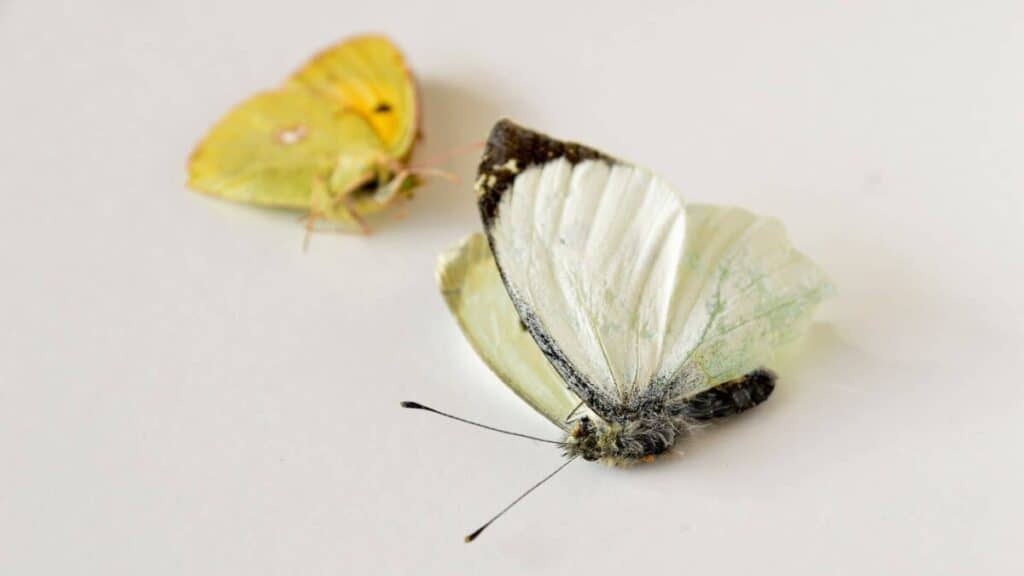
The lifespans of butterflies vary a lot. While some can live up to a year, others live for only a week, if not less.
One of the butterflies with the shortest lifespan is the Lycaena phlaeas known as small copper or the common copper.
These butterflies tend to live for only about 2 weeks, depending on the weather. On the plus side, there can be 4 generations of these butterflies in the course of a summer.
#5 Butterflies Can’t Fly Unless the Temperature is Over 80 Degrees Fahrenheit
The temperature limit is actually not super precise and depends on the species, but most butterflies cannot move at all when their body temperature drops below 80 degrees Fahrenheit.
This is because butterflies are cold-blooded creatures. Unlike us, they do not generate their own body heat, they must get it from the environment.
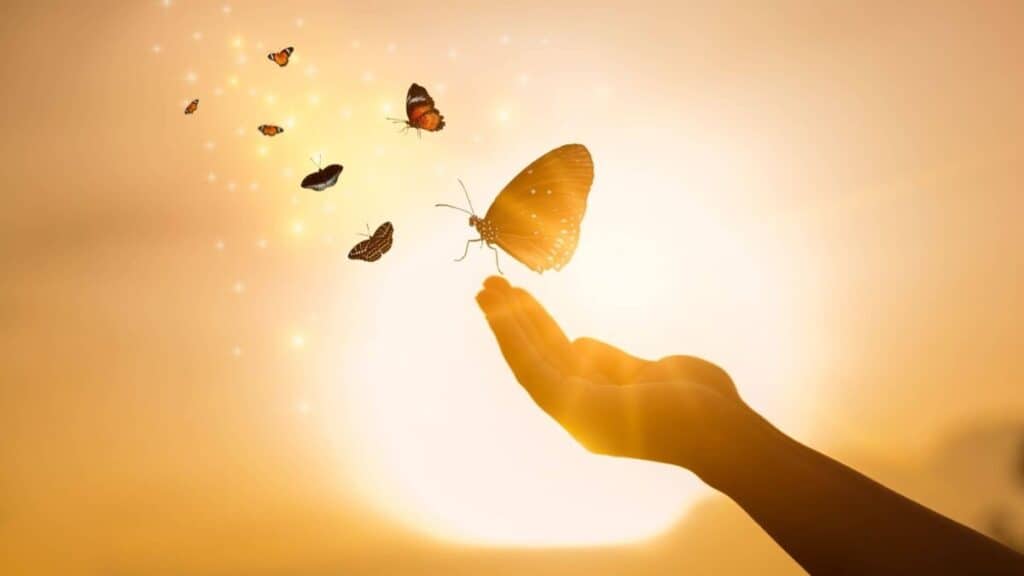
If they get too cold, they will actually seek a sunny spot and bask in the sun. The large surface of their colorful wings allows them to soak up the heat from the sun which allows them to fly again.
This is why you can usually only see butterflies on warm and usually sunny days. When the temperatures suddenly drop in the middle of the day, it’s also sometimes possible to see lots of butterflies standing in random places instead of flying.
Don’t worry, though, they are not dead or hurt, they are just waiting to get warmed up!
#6 Some Butterflies Migrate in Search for Sunshine
As you can see from above, butterflies can only really survive when it’s warm enough. But, we know some butterflies can live for up to a year. So how do they manage that? They follow the sunshine.
The most well-known migratory butterfly is the monarch butterfly of North America. As the weather gets colder, monarch butterflies migrate to warmer areas of Mexico and California from the more Northern parts of the US and even Canada.
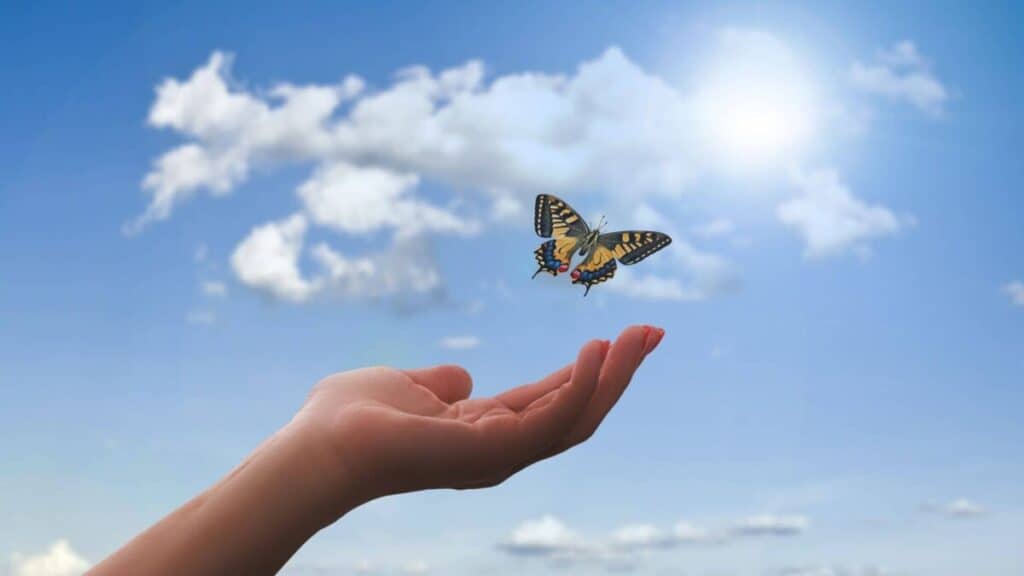
Some monarch butterflies will fly more than 2000 miles to reach their resting place for the winter. How do they know where to go? Well, scientists are not sure yet!
#7 Some Butterfly Species Trick Ants Into Taking Care of Their Babies
Some butterflies, particularly those from the order Maculinea, practice something that is called brood parasitism.
Namely, these butterflies have evolved to trick ants from the order Myrmica into thinking the butterfly larvae are their babies.
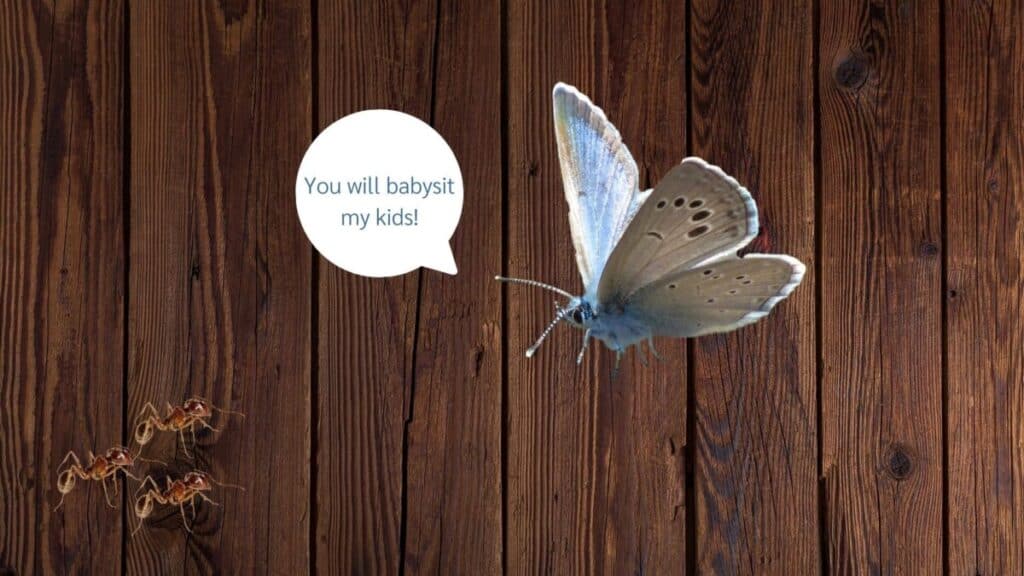
The trick is achieved by chemical signals: the butterfly larva emits certain compounds that make it smell just like the larva of an ant.
For this reason, the worker ants who encounter such larvae will bring them into their home and feed them along with their babies. Neat, right?
Note that this doesn’t work with any butterfly and any ant, only specific species of ants and specific species of butterflies are related in this way.
#8 Butterflies Taste Using Their Feet
In case you have been wondering, butterflies do have a sense of taste. They have all five senses, to some extent. But the senses of taste and smell are the most important for their survival.
This is how they decide what to eat as well as how they communicate with other members of their species (through chemical signals).
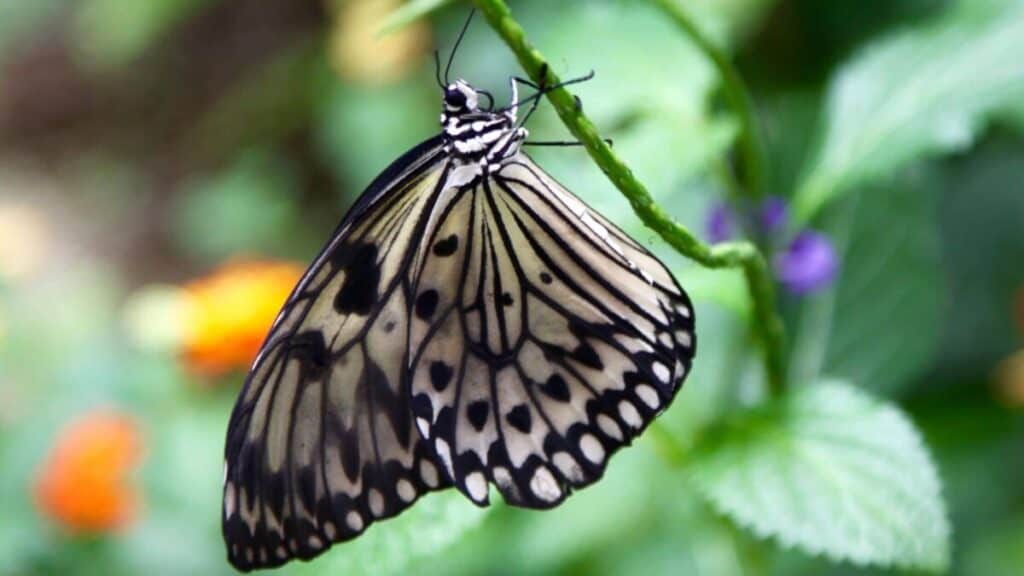
Now, we would logically expect that every creature tastes food using its mouth. That’s where the food goes, after all, so it makes sense?
Well, think again. Although butterflies have some taste receptors on their antennae and proboscis (the long tube we could call their ‘nose’ or ‘tongue’) they primarily use their feet to taste stuff around them.
Even though that’s quite weird, it makes sense: a butterfly can simply land on a flower or another object, and using its feet decide if it’s food or not!
#9 Butterflies Are on a Liquid Diet
Most butterflies don’t really eat, they only drink. Butterflies love feeding on all sorts of liquid things they find in nature.
They love sucking up nectar from flowers, tree sap, as well as liquids from fresh as well as rotting fruit.
Water is also very important for butterflies which is why they love puddles.
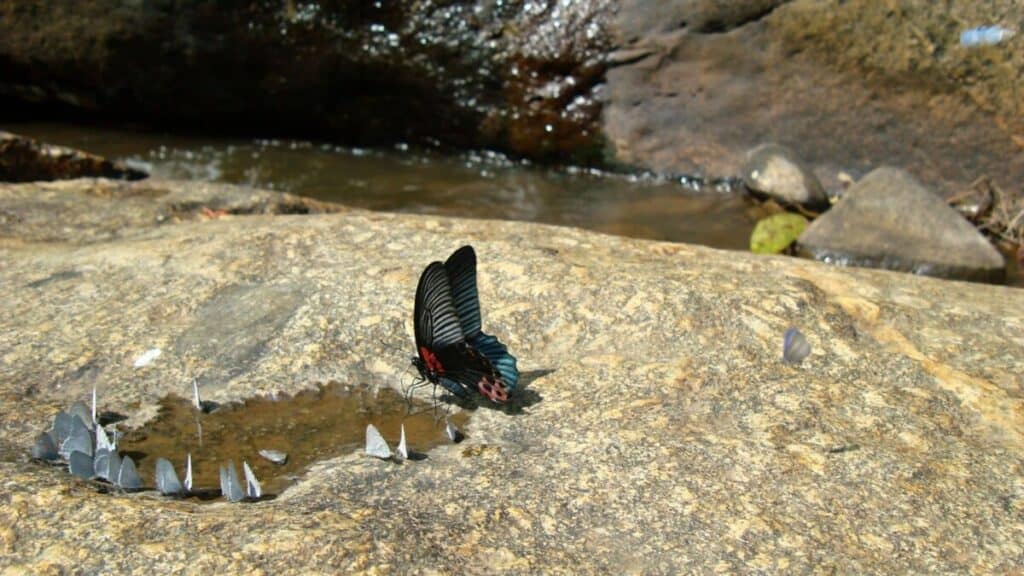
You can often see a bunch of butterflies congregating over a puddle, and that’s because they use water from puddles to get some essential nutrients like various minerals.
But why don’t butterflies eat anything? That’s because they can’t. They feed using a long tube (proboscis) which we can think of as their nose or their mouth, but it’s a drinking straw.
Interestingly, this is only the case with adult butterflies! Caterpillars have mouths and love to chew on leaves.
#10 Butterflies Have to Stick Their Nose Together Themselves
As mentioned before, butterflies eat using a long tube that sticks out from their face like a long tongue.
However, when butterflies first emerge from their cocoons as adults, this ‘tongue’ is not ready to use! It’s divided into two halves, and the butterfly then needs to use its own saliva to stick them together.
After the process is complete, they can begin sucking on nectar, water, and other delicious liquids. Also, when not in use, butterflies can roll up their proboscis to keep it out of the way.
Alright, that’s it for this article, here are a few hand-selected articles that you might also find interesting reads:
10 Fascinating Facts About BeesFun Facts About Ants
Are Drugstore Beetles Harmful (Quick Facts)
Recent Posts
Tiny Black Bugs in Bathroom NO WINGS: What They Are and What to Do!
Finding tiny black bugs in your bathroom can be uncomfortable, to say the least. Especially if they are persistent, or they appear in very large numbers, which they often like to do. When it...
Tiny Black Bugs in Plant Soil - What Are They & What To Do About It
A short horror story: You get a new houseplant. You do your best to take care of it. You’ve ensured that it has the right soil, the right amount of sun, it gets enough water. And then one day, you...

